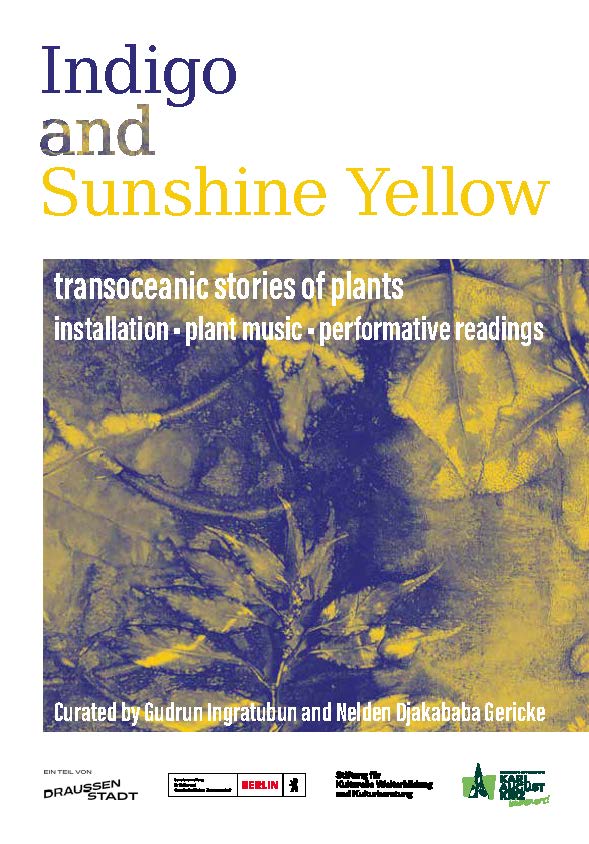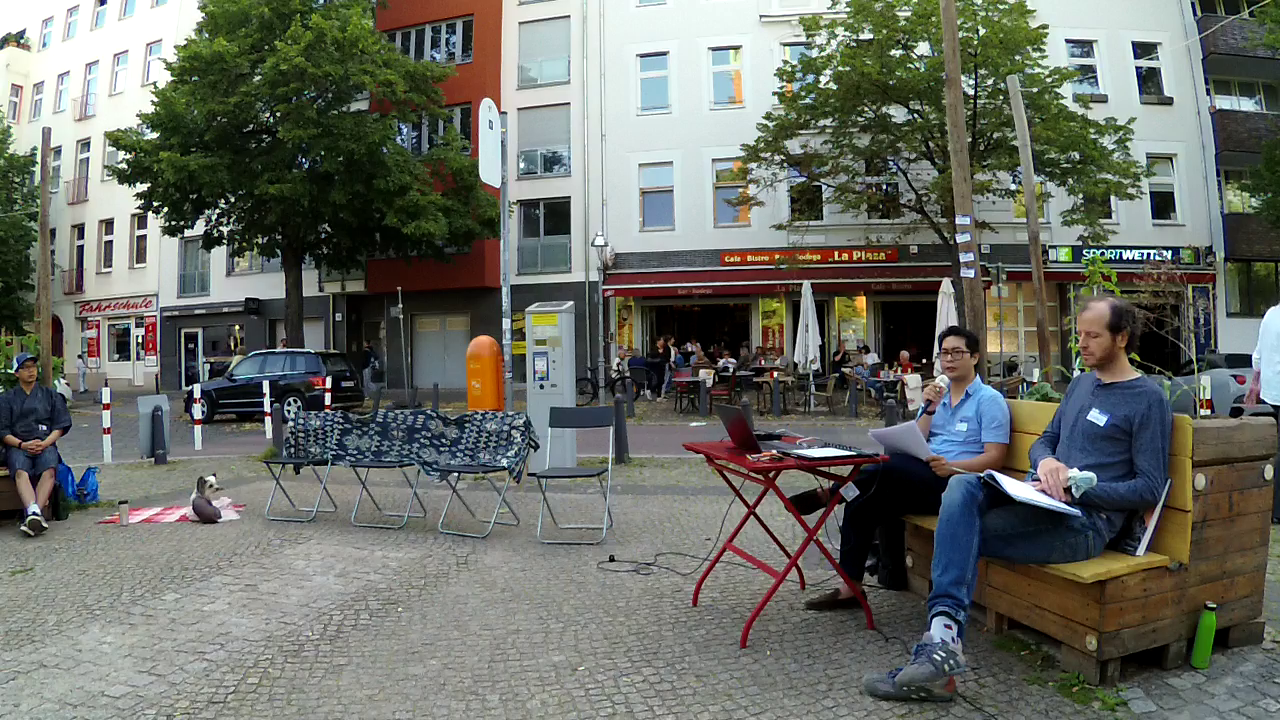Indigo and Sunshine Yellow --- transoceanic stories of plants

Description
The natural colours of indigo and sunshine yellow are the focus of this series of outdoor events held at the benches of the raised plant beds at Karl-August-Platz. These colours are derived from plants that have been brought to Europe from different parts of the world, interwoven within layers of colonial histories. Through the dye-ing shade sails together, plant-generated music presentations, and multi-perspective readings, we invite you to engage in exchanges with and about these extraordinary plants, including the colonial and gender-based aspects of the histories involving these plants and courageous women.
We want to re-kindle dialogue between us as humans and plants, eye to eye and ear to ear. The readings and music from the events will then be recorded and made available via a QR code on the benches of the raised plant beds.
(From the program text)
Indigo and Sunshine Yellow is a program curated by Gudrun Ingratubun and Nelden Djakababa Gericke. A series of installation, plantmusic, performative readings with Citlali Huezo, Kei Watanabe, Kunigunde Berberich, Mojisola Adebayo, Rosanna Lovell, Setu Legi, and Simon Köslich. See the project page.
Performances
For the performance on the 2nd of July, an algorithmic music inspired by the “sound of the indigo plant” was composed. The bioelectricity that is converted into sound through a dedicated device is used as an inspiration for a soundscape performed by the computer: a symbiote of nature and machine. The music set the mood for reading of texts telling the story of the Indigo plants from its forced plantation and exploitation through collonialism. In one part, a story on how ink made out of indigo plant helped the Indonesian writer Pramoedya Ananta Toer during his imprisonement in the Buru island.

On the performance on the 1st of October, together with Setu Legi and Umi Maesaroh, we invite the audience on a procession to “cleanse” the Karl August square. In contrast to the first performance, I was carrying a sitar and sung “cleansing mantra”, accompanying the long parade lead by Setu and Umi. After making a round of the square, under the trees, a continuation of the “ritual” is performed.
